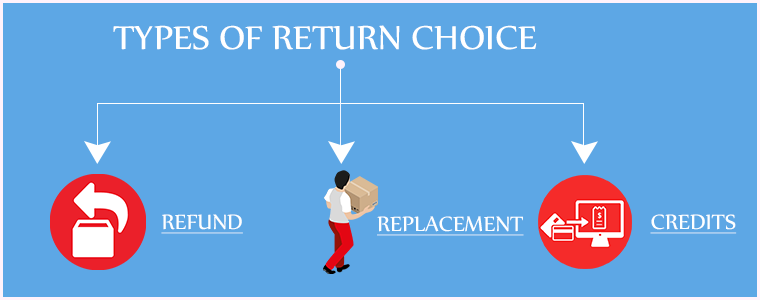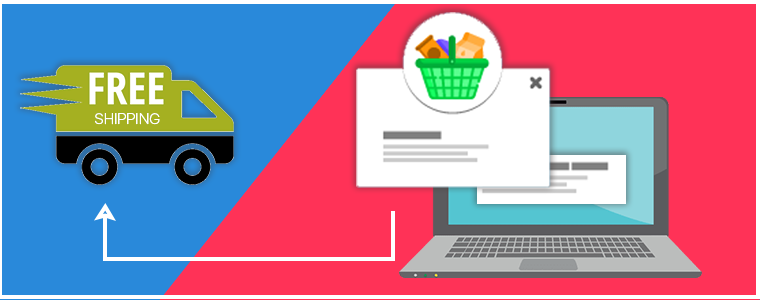Managing eCommerce returns can be a headache for online retailers. If a rise in sales makes eCommerce merchants extremely happy, an increase in product return neutralizes that happiness.
It is to be of no doubt that online stores have higher return rates than offline stores and there are strong reasons to back this fact.
When customers visit a brick-and-mortar store, there is no confusion regarding the product size. There are no possibilities of getting the wrong product. Most importantly, what it looks is what it is, which is not possible during online shopping.
Basically, customers can try out a product in a physical store. They can touch it, hold it, feel it and find out the flaws at that moment, which is not possible in the case of an online store. This is why e-retailers face excessive returns and it becomes quite a difficult task to manage them.
In this article, we will discuss how you can manage eCommerce returns and improve customer satisfaction.
1. Create a flexible Return Policy
One of the important points in the returns management best practices is to craft your return policies well. Be clear about the terms and conditions. Mention what kind of returns you accept, what should be the condition of the item to get its replacement, what is the time span for returning an item, what is the procedure to raise a return request, etc.
A well-written eCommerce return policy helps a user to understand your return procedure better. Also, avoid using any hard language that is difficult for a user to understand.
Product return policy not just helps you handle customer returns efficiently but also encourages users in their purchase decision process.
Want to know how you can write an effective return policy?
2. Allow Customers to make a Return Choice
Adding to the list of eCommerce returns management is letting customers decide what they want to do with the product they wish to return. Whether they want to replace the product, raise a full refund or need the product amount in the form of points/store credits, the choice should be left to them.
Providing a return choice is a persuasive tactic to make customers return to your store in the future. For example, if a customer opts for the credits worth the product amount, providing him with that would ensure that the customer is going to come back to your store in the nearby future and make a purchase.
Put simply, it improves customer retention on your website.
3. Automate your Return Process
If you have a large e-commerce store, you will have more product returns. Imagine how difficult it would get if you manually handle product returns. Moreover, it will be very time-consuming.
Automating your eCommerce returns can save you a lot of time and effort. You would not need to handle each and every step on your own. From informing the customer about the placed return request to notifying them about the return status until the process is over, make everything an automatic process. This will decrease the return processing time.
4. Speed up your eCommerce returns
Speeding up your return process is a vital point in eCommerce returns best practices.
Right after a customer places the return request, they expect their money’s worth in some form to the earliest. Though it can take a few days at least, you should not make your customers wait for too long. A long delay creates frustration among customers and they would think a few times before placing an order from your store again. Make sure the returns are processed as quickly as possible. It improves customer loyalty.
5. Provide free shipping
Customers do not like to pay an extra penny for returning a product. In fact, no one would like to pay some extra amount for a product that is defective or doesn’t match their expectations. If there is already a defect and on top of that, customers are asked to pay a small charge for returning it, they will feel annoyed.
To avoid this, you can allow free shipping on returns and keep your customers happy and satisfied.
Return Manager module by KnowBand
Considering all the above points, if you want to handle your product returns easily and make the product return process on your store well-structured, you can opt for our Return Manager module.
Knowband provides the RMA extension to various e-commerce platforms such as PrestaShop, Magento, Magneto 2. Check out
Key Features of Return Manager-
1. Provide your customers with the option of Credit, Refund or Replacement
The Return Manager module allows three return methods: Credit, Refund, and Replacement. Through Credit, a customer can ask for the product amount to be transferred to their store account in the form of credits so that they can use them for the future purchase or they can simply ask for a refund or a replacement.
2. Customers can highlight the defect by uploading the product image
This addon allows customers to upload an image on the product return form to point out the defect so that the merchants can easily know the issue that led to product return.
3. Make it easy for the customers to specify their return reason
The product return manager enables you to create a list of possible reasons for product return. When a customer is raising a return request, he or she would be able to select the return reason from the drop-down list in the product return form.
4. Update customers with return status
Similarly, you can create a list of return status that defines whether the return is in process, returned, rejected, etc. and update your customers accordingly.
5. Set up multiple store addresses
If you have multiple stores located in different areas, you can set up multiple addresses and display them in the return form. When a customer places a return request, he/she can choose the return address based on the area where he/she lives.
Some of the other features that the module provides are-
6. You can track your returns from the back-end, allowing you to check how many return requests have been raised and how many have been approved.
7. Customers can further submit their query regarding their return by creating a new ticket under their return history.
8. The RMA extension also allows you to place a return on your customer’s behalf.
9. You can set up your return policies and return guidelines.
10. You can customize the emails as per your choice.
Look out for your preferred module to check its complete features and benefits.
The Bottom Line
Ecommerce returns management is highly important for customer retention. If customers face difficulty in placing a return request, it will discourage them to make a purchase on your store from next time onwards, and you will eventually lose them.
But if you make the return process convenient, customers will be more likely to visit your store again in the future despite receiving an incorrect order sometimes.
Do try the Return manager module and apply the above-suggested 5 ways to manage your eCommerce returns.
Also Read:






Being a business owner myself, this blog about eCommerce strategies is quite insightful. It is one of the better sources for procuring ideas to create a better online presence.
Thank you, Neelima.
Great article, Manish. Very well explained
Thanks, Jimmy. Glad, you liked the article
Very useful information, Manish. I liked the idea of offering store credits to the customers. Hope I will be able to manage my returns effortlessly now.